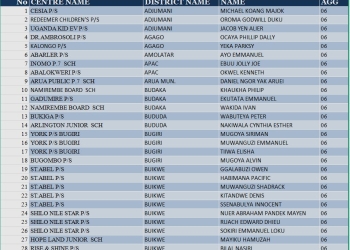
The Olwiyo-Juba 400 kV power interconnection which is meant to interconnect the power grids of Uganda and South Sudan commenced around 2015 when the Northern Corridor infrastructure initiatives were initiated by the presidents of the four countries, which are Kenya, Uganda, Rwanda, and South Sudan. It is out of this initiative that the two countries, South Sudan and Uganda presidents initiated a flagship project that is supposed to evacuate power from Uganda to South Sudan.
The project was meant to target the completion of Karuma. The responsible power utilities were tasked to prepare the documents for a Memorandum of Understanding (MoU) to be signed by the ministers in charge of energy in the two countries.
However, the two countries decided to task the Nile Equatorial Lakes Subsidiary Action Program Coordination Unit (NELSAP-CU) to do the coordination, resource mobilization, and implementation of the project, assisting the two utilities of Uganda Electricity Transmission Company Limited (UETCL) and South Sudan Electricity Corporation (SSEC) to implement these projects to the realization of transmission lines.
Currently, the project has completed the technical feasibility studies and Environmental and Social Impact Assessment (ESIA) for South Sudan, and on the side of Uganda, the consultants have completed ESIA and feasibility studies with actual construction expected to begin in September this year.
However, the consultants encountered a security issue that led to the pausing of the activities. This led to a stakeholder engagement meeting with UETCL, the Ministry of Energy and Mineral Development (Uganda), SSEC, Consultants, and government leaders on June 6th in Gulu district to rectify the misunderstandings. Simon Gen an assistant surveyor consultant during the meeting narrated the arrest of his colleagues on the 14th of March 2024, by the South Sudan Army.
Eng. Jacob Manyuon Deng said that it was for that reason that they had to visit the district of Amuru and Nimule border because what was encountered was a misunderstanding between the consultants and the team on the side of South Sudan that are in charge of security in the area.

“And because they did not understand that the security clearance was given for the studies to be done given that the studies are done by using some equipment so this might have raised curiosity,” he said
“The visit was very fruitful as we managed to meet with the Resident District Commissioner (RDC) of Amuru district Mr. Stephen Latek Odong and the communication was very good, very promising as the consultants on the side of Uganda resumed their work on the 7th of June,” the Regional Power Program Officer confirmed
“We also met with the border authorities on the side of South Sudan and the results were very great. We believe that there will be no more misunderstandings because we carried out discussions and shared some documentation and they can understand the project,” he added
Mr. Stephen Latek Odong who was in attendance assured of security for the team doing the work so that their safety is taken care of but also promised to sensitize the population to appreciate and embrace government programs as it is one way how it apportions resources in the best interest of the citizens.
“As chairman from a statutory point of view. The RDCs are the chairmen of the district Security Committee. It’s our cardinal duty to ensure that the work is implemented without any disturbance with matters that have to do with security,” he mentioned
The potential benefits of the Project

The Regional Power Program Officer at NELSAP says that this project is going to benefit the two countries in terms of economic development, especially on the side of South Sudan where the cost will be reduced because South Sudan is using diesel fire generation which is very expensive and the tariff is very high. “This line is very important for South Sudan more than Uganda.”
“Uganda will benefit economically by selling power to South Sudan while South Sudan will benefit by receiving power that will spur industrialization and other macro-economic development.”
Resident District Commissioner of Amuru district Mr. Stephen Latek Odong economic development in the South Sudan side will balance the immigration patterns. “We see a lot of potential South Sudanese come out of their country because they look for opportunities to be employed. Once employment is taken closer to them. I believe it will not only enhance their incomes, but it will reduce the level of insecurity that they get involved in or participate in,” he stated
“I am happy that this power line moving from Uganda into South Sudan primarily because it’s a security component. It will improve the security situation within the belt of the border between Uganda and South Sudan because the negative energy that would have probably been seen will be reduced as many people will constructively be engaged in development-related activities,” Stephen Latek Odong ascertained
Also, he noted that development cannot go in vain as it is a factor on land and rests on the factors of production and land becomes very key when any development is coming up. The question of land and how it is handled becomes very fundamental.
He assured the public that in as much as some individuals will lose their rights to land, the government will compensate them for the land that will be used, which once constructively used by the project-affected persons will create a difference in their lives.
“As I speak now, the power lines moving from Uganda into South Sudan are going to affect a reasonable number of the population, and the provision of the law article 26 of the Constitution provides for mandatory acquisition,” he informed
“It’s my hope and belief that the success of the hydro connectivity between Uganda and South Sudan will be a big plus for the security of our country and the economic development of our people will give it all it takes to ensure its success,” the Resident District Commissioner of Amuru district hopes
The transmission line to be environmentally friendly
Eng. Jacob Manyuon Deng, the Regional Power Program Officer at NELSAP informed that for a transmission line project like this to happen, all mechanisms are considered in the studies to safeguard the environment where the corridor buffer is a line to conform to a 60m corridor for the 400kV TL.
Animals are also considered and their movements or migration plus all aquatic life is studied and climate change mitigations are determined and captured in the report. Due to the effect of greenhouse gases, renewable energy is preferred to transmit through the line.
Ogwal Joseph Jones the Manager Environment, UETCL comments that a high-voltage electricity transmission line like this may affect the environment through mainly a change in land use from an undisturbed environment to a built one due to the line/substations.
“It also causes involuntary resettlement, as affected people have to be moved as well as creates visual blight, due to the gigantic nature of the high voltage line, which is not appealing to some people. The summary is that it triggers an impact on the environment leading to social and biological impacts, associated with land use change,” he commented
He added a voice on how they make such a project environmentally friendly through the application of procedures and processes that are legally acceptable and also by informing the stakeholders of the various impacts associated with the developments. “We compensate affected people (not people hit by electrical circuits) and undertake livelihood restoration/community development initiatives in the affected communities.”
Therefore this line will be sustainable as the guidelines are followed and measures that guarantee environmental and social responsibility, for a long time.
Project financing and implementation
The interconnection projects on both sides of the border are two projects financed by the African Development Bank (AfDB) with some funds coming from the two governments.
Initially, the transmission line was supposed to start from Karuma to Juba but UETCL built the line between Karuma to Olwiyo reducing the scope on the Uganda side while the study is now going to consider the substation from Olwiyo to establish another substation in Bibia (near the Elegu border post in Uganda), and another substation in Juba.

















